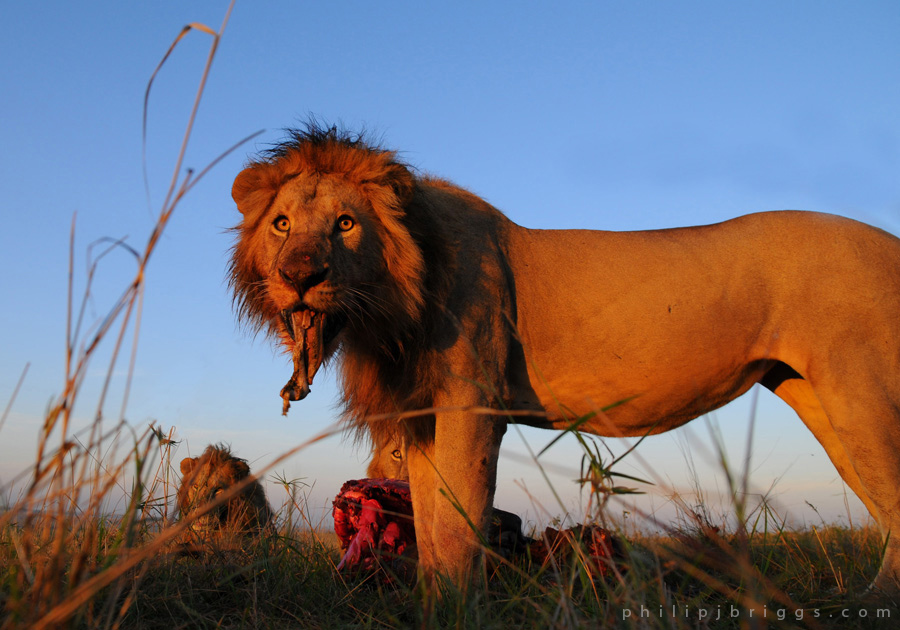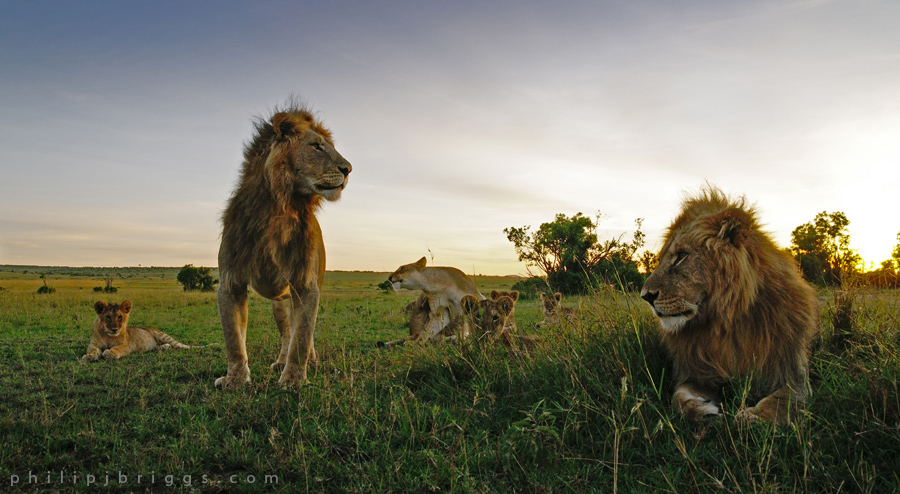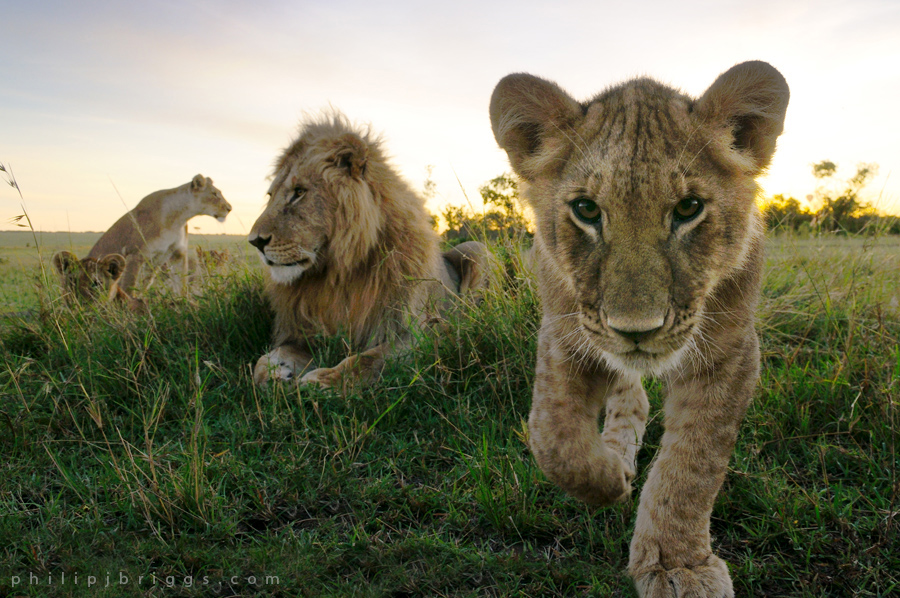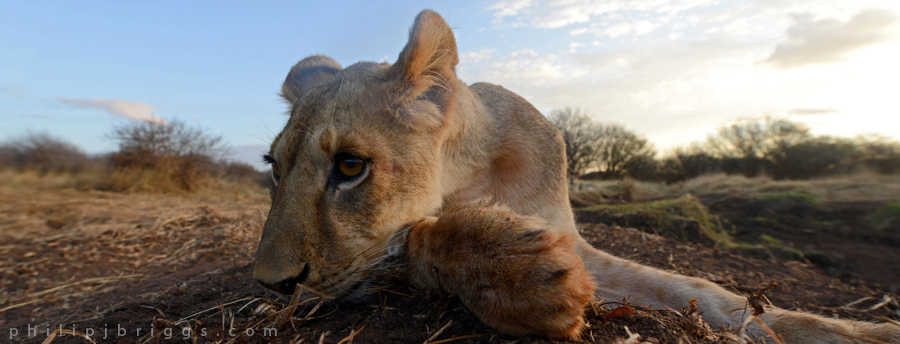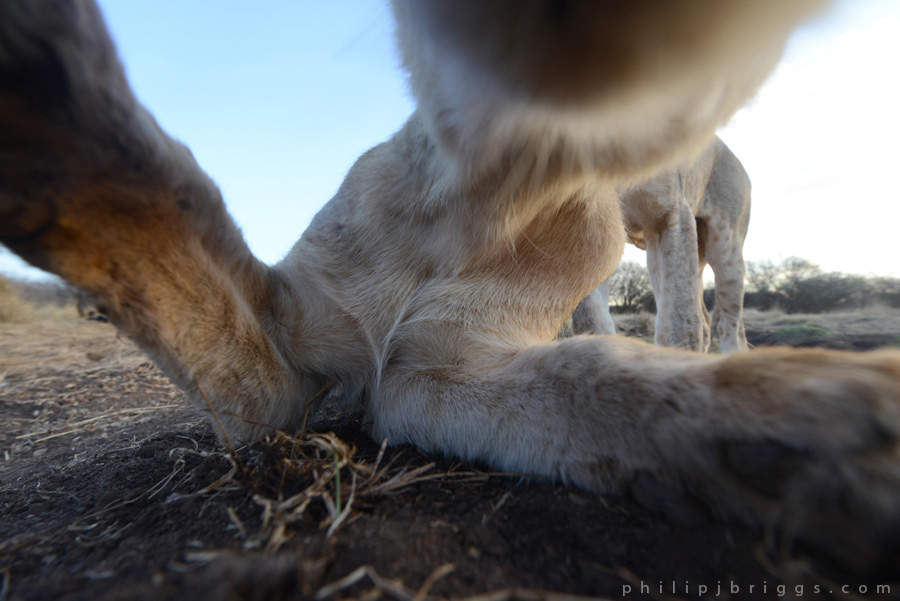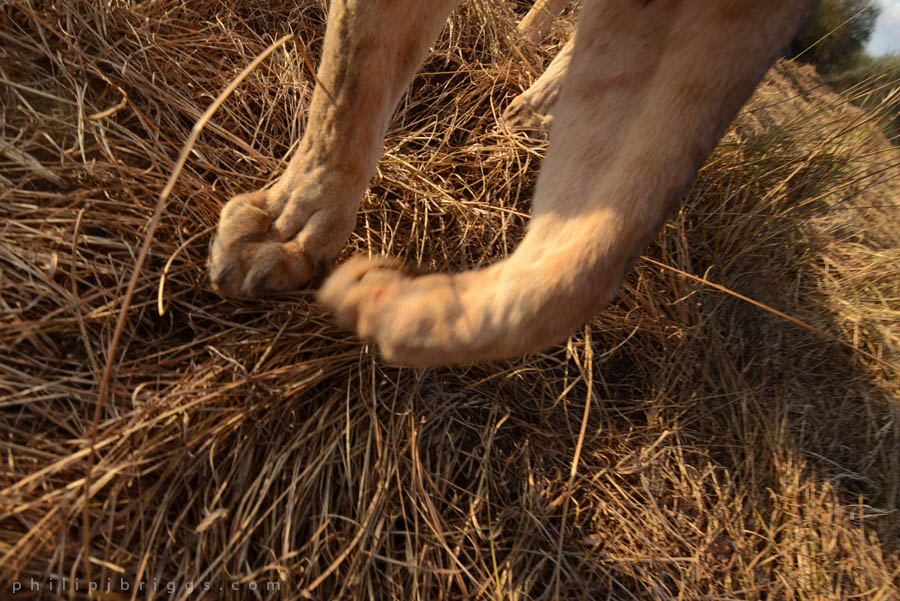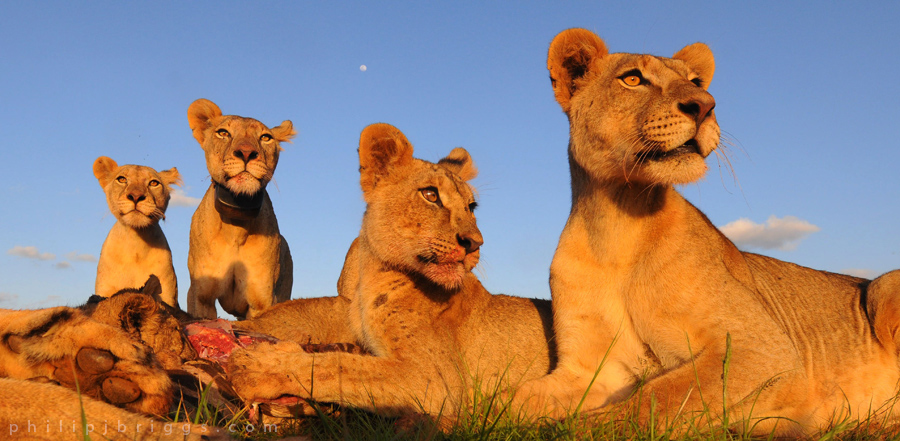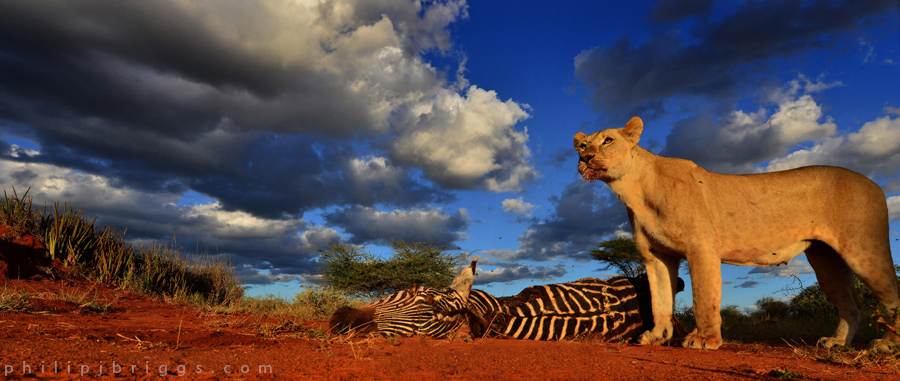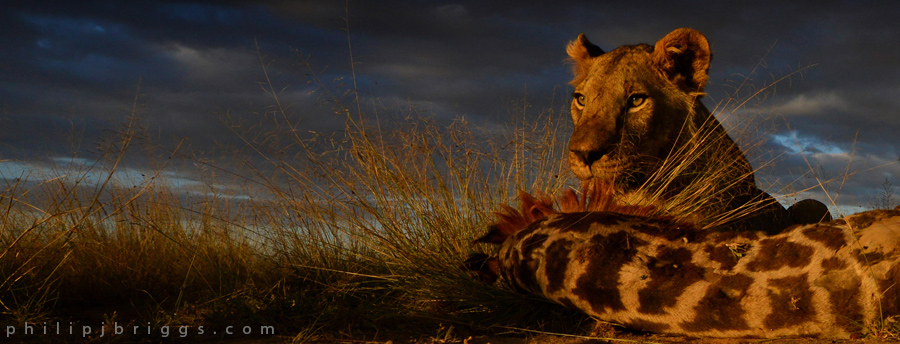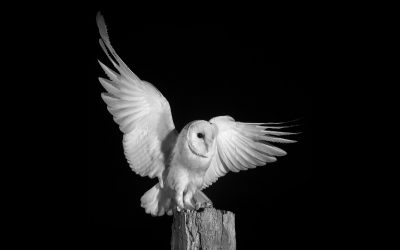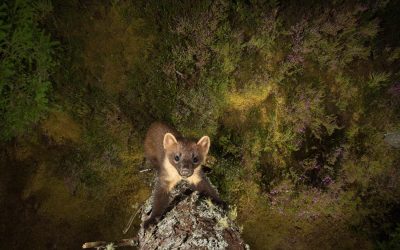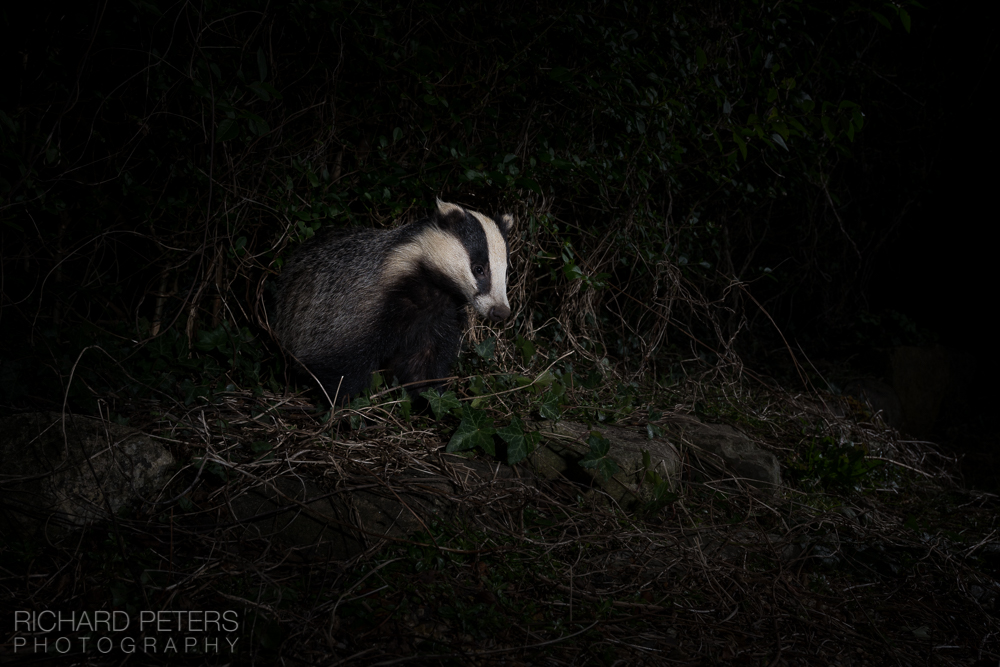PHILIP BRIGGS
Remote Photography in AfricaIntroduction
What inspired you to get involved with remote photography work?
One day I finally took the plunge and brought a simple hand-drawn sketch to a local carpenter to make an 8ft plank of wood with a base fixed on one end where I strapped the camera. This was then hoisted out of my 4×4 vehicle and placed onto the ground whilst I held onto the plank from inside the car. This gave me great versatility but meant that the animals always had to come to me. In the coming years I developed boxes which I would place in appropriate places and fire with a remote shutter release from a distance.
My initial setup was simple but worked like a charm. Although it needed more protection for the camera. These are my first attempts.
What do you specifically find are the advantages of using these techniques?
What are the disadvantages?
From a technical perspective on location, what are the greatest challenges you have had to overcome?
One of the biggest challenges is not knowing whether the camera will get mauled. I often wonder if I’m completely crazy when I leave an expensive camera and lens out in the open with minimal protection in close proximity to lions. When a curious lion gracefully lifts the camera in its mouth and turns to run 50 metres before dropping it, there is a certain feeling in my gut that I can only associate with falling from a great height. But time and again, the resulting images are worth the damage inflicted.
The smartest trick which I mastered was learning that lions need something to bite onto if they are going to lift something and quite frankly I’d prefer it wasn’t my lens. I developed a raised section on top of the protection box which usually does the trick in allowing the lion to bite the box without harming the camera. Below you can see that my lens – the only exposed element of my gear – is avoiding attention. In the second picture the lioness is walking with the complete box in her mouth!
The equipment used can get quite specialist, ranging from a simple remote system to complex lighting, trip-beams and flashes. How complex do your setups get or do you find keeping it simple is the best approach?
I like to be able to keep my setup simple and compact with minimum technology, but inevitably if I want more control over what’s going on, then I can see the need for more technology being introduced to my system in the future.
What has been your most successful trap-camera project to date and how long did it take from concept to first successful image?
What’s been your biggest failure, either technically or photographically?
On one occasion I was testing a different focus mode and it failed emphatically – with every image out of focus – mainly due to the focus hunting between the sky and a tree but never finding the subject. The silver lining through, was that one of the lions turned the camera to a different angle (the camera was flipped onto its side and flopped back down to a slightly different view) which resulted in much improved results! It’s a bit embarrassing to think that a lion got better results that day than I did, but alas, you live and learn. See below.
There are those that consider it ‘cheating’ to not physically press the shutter yourself or even be there when the photo is taken. What would you say to that?
Occasionally I get lucky with a setup but I am there pressing the shutter from a distance with a remote so it just feels like I deserve the resulting quality images because of all my preparation.
"I never feel so much in control of what I’m doing with regards to photography than when I’m camera trapping. The only thing that is out of my control is what the animals do and that applies to every type of photography."
Where do you see trap and remote photography going in the future?
Philip Briggs
Website: philipjbriggs.com
More of Philip’s work can be found on his website, where you can also learn more about his current projects, inlcuding Lion Guardians, which works in Kenya and Tanzania. The project is aimed at protecting wild lions which live outside the security of national parks, as well as providing educational and employment opportunities for the Maasai who live in these areas alongside wildlife.
Other Interviews
How to Photograph Nocturnal Wildlife in Infrared
What is Infrared (IR) Photography?Light that comes from the sun consists of a very wide spectrum, and when we look at the world around us we are only seeing it in a very narrow part of this spectrum known as ‘visible light’. The sensors inside digital cameras are...
Terry Whittaker – Camera Trapping in the UK
IntroductionSince starting out as a freelance photographer in 2000, Terry has built up a reputation as one of the UK’s foremost wildlife photographers. He has won multiple awards for his work and his images often carry a strong conservation message. Terry’s desire to...
Richard Peters, on a Back Garden Safari
Introduction Richard Peters is a professional wildlife photographer from the UK with a style that often takes a priority of light, over subject. During the last year however, he has begun working with camera traps, concentrating on a location he has a personal...

